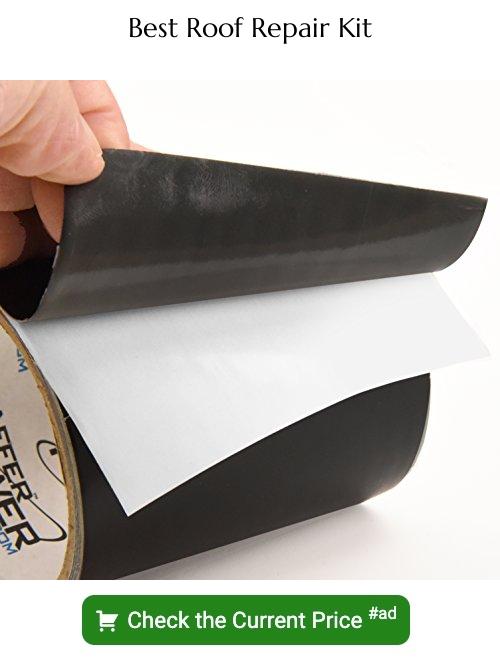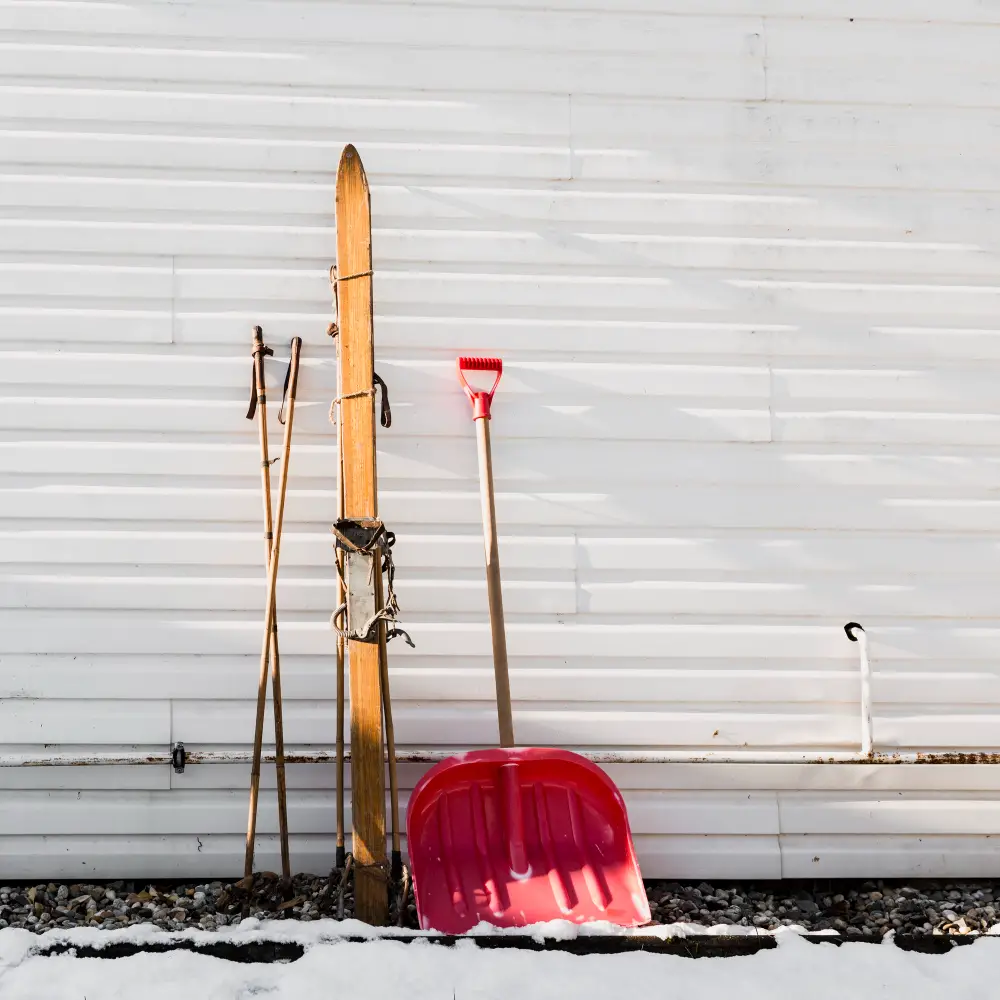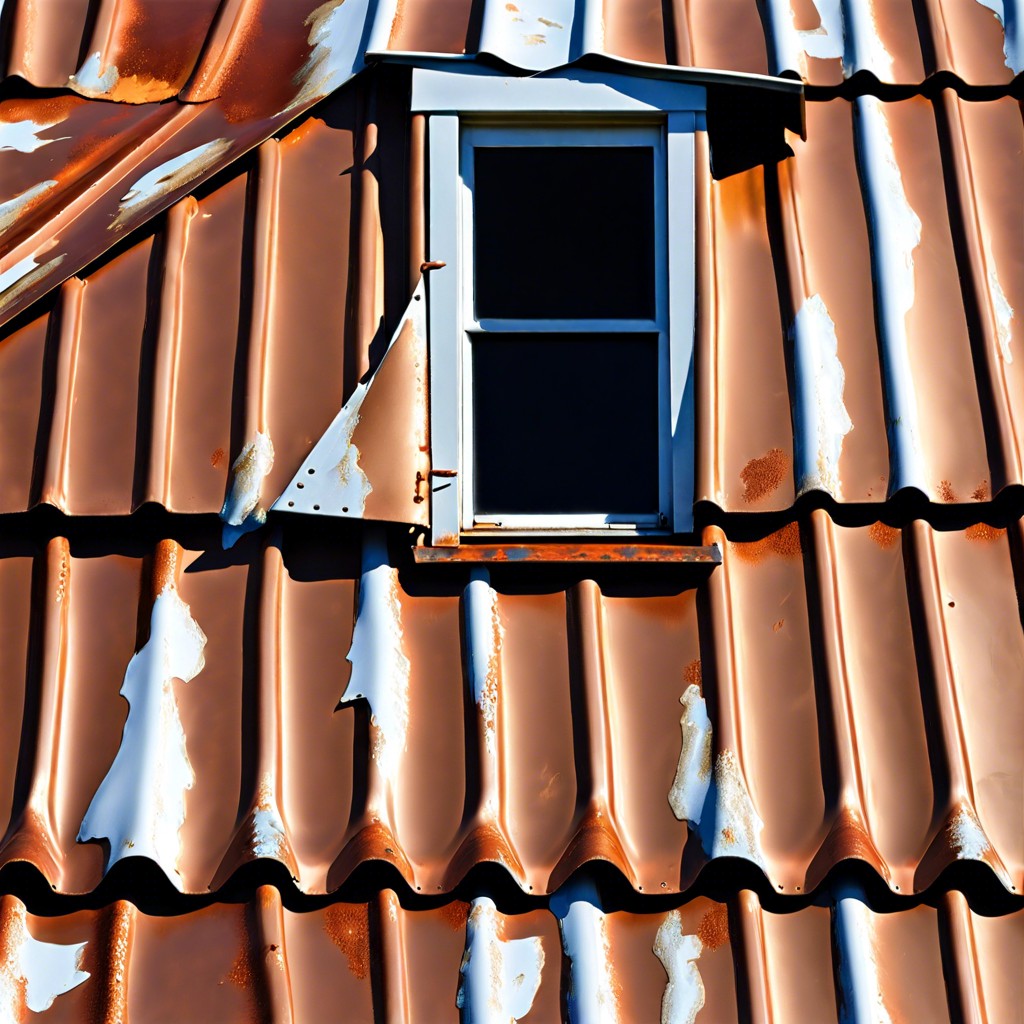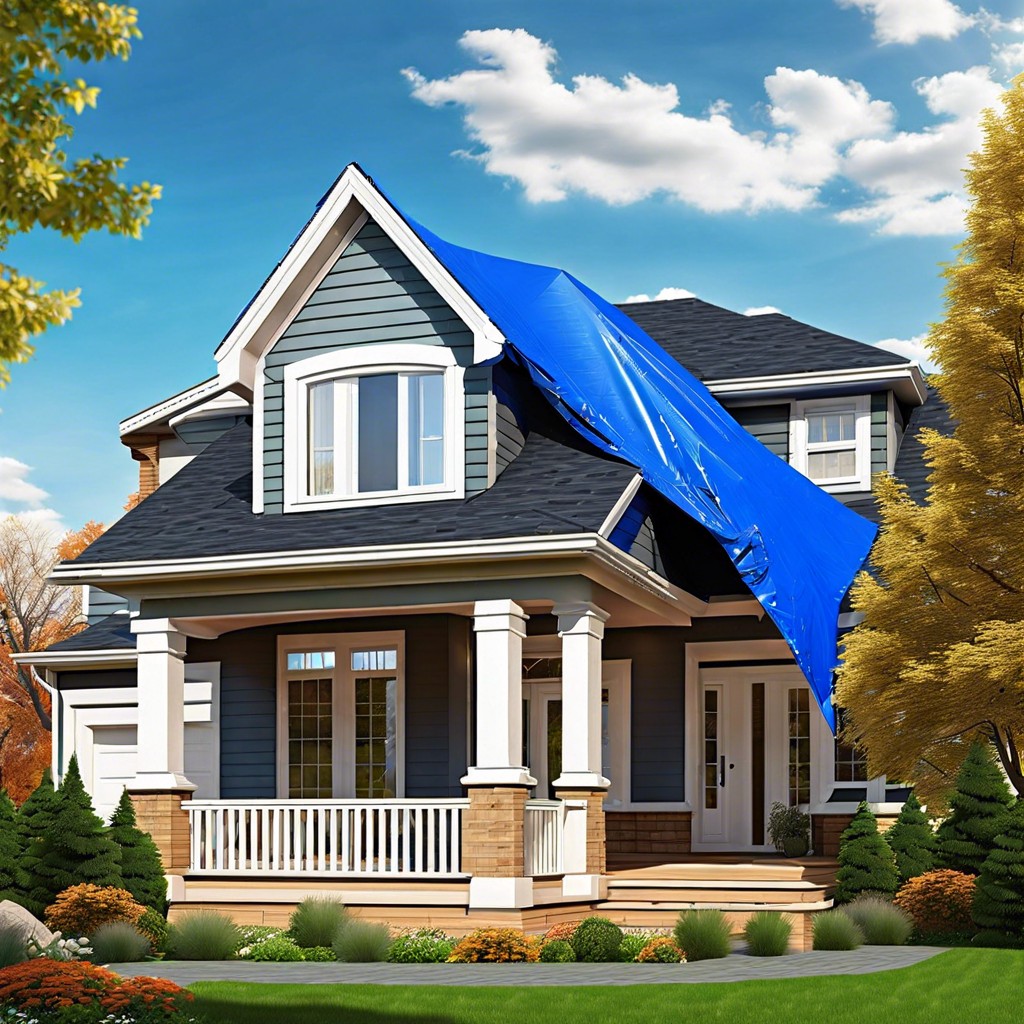Last updated on
Understanding wind damage to roofs is essential for homeowners to prepare for and mitigate its impacts effectively.
Key takeaways:
- Wind damage can compromise roofing materials and lead to water infiltration and structural damage.
- “Lifting” of shingles or tiles can allow moisture to seep underneath.
- Flying debris during a windstorm can fracture or dislodge roofing materials.
- Wind can cause fatigue and brittleness in roofing materials over time.
- Immediate action is necessary if you suspect wind damage to your roof.
What Is Wind Damage?
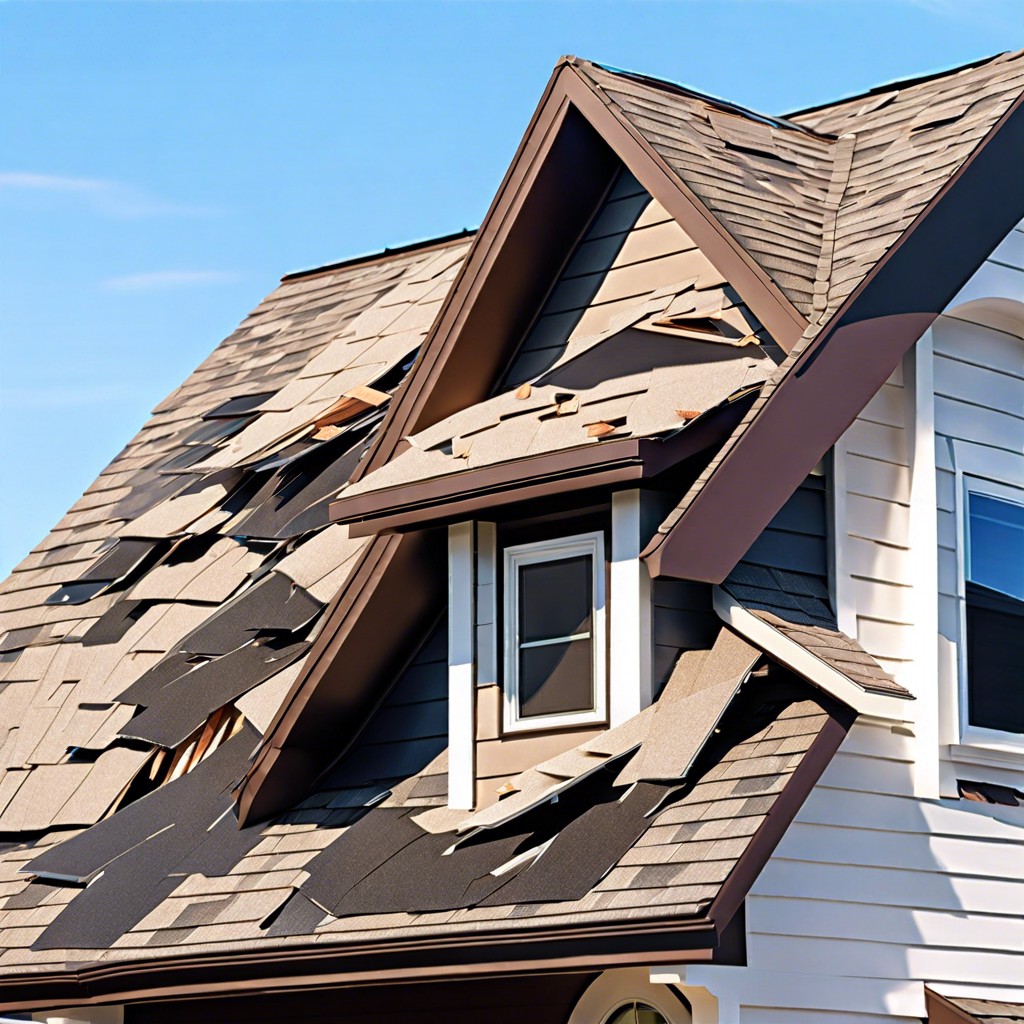
Wind damage to a roof occurs when strong gusts and sustained winds create a force strong enough to compromise roofing materials. During such events, wind can remove or loosen shingles and tiles, leading to water infiltration and structural damage. The force exerted by the wind also places stress on the corners and edges of the roof, where material is more susceptible to lifting.
Even without visibly tearing materials away, wind can cause “lifting,” where shingles or tiles are subtly pushed up, breaking the seal that bonds them together. This can allow moisture to seep underneath, potentially causing rot, mold, or leaks without immediate signs of damage.
Another less considered effect is the impact of flying debris. During a windstorm, items can become airborne and strike the roof, fracturing or dislodging roofing materials.
Lastly, the aftermath of wind damage often results in an uneven roofline. Ridge vents, gutters, and flashing can all be distorted by high winds, creating the potential for further damage if not promptly addressed.
How Wind Damages Your Roof
Wind can inflict damage on roofs in several ways, often dependent on the wind’s speed and direction, as well as the roof’s materials and condition. Shingles and tiles may lift or become completely dislodged when wind creates a strong uplift effect. This is more likely along the roof’s edges or at the ridge, where wind pressure can be most intense.
Repeated exposure to strong winds can cause materials to fatigue and become brittle over time. This reduces their ability to withstand subsequent storms, leading to a cycle of increasing vulnerability.
Flashings, which are designed to seal edges and prevent leaks around vents, chimneys, and along the seams of roofs, can also be compromised. High winds can curl or peel these protective materials, allowing water to infiltrate and damage the roof’s structure and the interior of a building.
In extreme conditions, windborne debris becomes a risk factor. Branches, outdoor furniture, and other loose objects can be picked up and hurled against the roof, causing punctures, dents, and other forms of structural harm.
Finally, even if the roof material remains intact, the repeated buffeting by strong winds can undermineroof decking or underlayment through the constant strain and vibration. This might not be immediately visible but can pose significant risks if not addressed.
Steps to Take If You Suspect Wind Damage
Upon suspecting wind damage to your roof, immediate action is essential. First, perform a visual inspection from the ground, looking for missing, lifted, or damaged shingles. Pay close attention to the edges of the roof and areas around chimneys and vents, as these spots are particularly susceptible to high winds.
If it’s safe, use a ladder to get a closer view, but do not walk on the roof, as it may be unstable. Instead, utilize binoculars for a more detailed assessment. Document all signs of damage with photographs; these can be crucial for insurance claims later on.
Next, assess the interior of your home for signs of water infiltration, such as leaks or damp spots on the ceiling. This can indicate that the roof has sustained damage sufficient to compromise its integrity.
Contact a reputable roofing contractor to conduct a thorough inspection. A professional can identify less obvious damage and provide a detailed report, which is often required by insurance companies. They can also tarp the roof to prevent further water damage until repairs are made.
Finally, review your homeowner’s insurance policy and understand what coverage you have for wind damage. Contact your insurance provider as soon as possible to report the damage and start the claims process. Provide them with the documentation you’ve gathered, including photographs and the roofing contractor’s report. Your insurer will guide you through their procedure for obtaining estimates and making repairs.
Protecting Your Property From Wind Damage in Advance
Proper maintenance is key in fortifying your roof against wind damage. Regular roof inspections can identify potential weak spots, ensuring they are reinforced before a wind event.
Trimming trees close to your home is crucial; this prevents branches from breaking off and damaging the roof during strong winds.
Installing wind-resistant roofing materials can offer added protection. Materials that meet the American Society for Testing and Materials (ASTM) standards for wind resistance—like asphalt shingles rated for high winds—are recommended.
Using specially designed truss and rafter ties can help anchor the roof more securely to the walls. Additionally, consider applying roof cement to shingle edges in wind-prone areas.
For homes in extremely windy climates, retrofitting with a wind mitigation system might be worth the investment. This system can include enhancements like reinforced roof decking and impact-resistant shingles.
Always ensure your gutters are clean and well-secured; clogged or loose gutters can lead to water buildup which, coupled with strong winds, can cause significant damage.
Consulting with a roofing professional can provide personalized strategies for your home’s needs, tailored to local weather patterns and building codes.
Is Roof Damage Covered By Insurance?
Most homeowners insurance policies typically cover roof damage that’s the direct result of a peril named in the policy, such as wind. The degree of coverage, however, hinges on the specifics of the policy and the age and condition of the roof at the time of the damage.
Understanding policy declarations can be key to knowing the extent of the coverage. For instance, actual cash value (ACV) policies consider depreciation and may reimburse less for older roofs, while replacement cost value (RCV) policies promise to cover the cost of a new roof minus the deductible.
Deductibles also play a significant role in the amount of compensation you’ll receive. Some policies have a separate, often higher, deductible for wind and hail damage, which is something to note before filing a claim.
Additionally, regular maintenance and timely repairs can impact claim eligibility. Insurance companies may deny claims if they deem that negligence contributed to the damage.
To ensure coverage, periodically review the policy to stay informed about what is and isn’t covered, and under which circumstances. It’s also prudent to document the roof’s condition and keep a record of repairs and maintenance. This will streamline the claims process should wind damage occur.
Finally, immediately after a windstorm, contact the insurance company to initiate the claims process. They’ll send an adjuster to assess the damage and guide you through the settlement. Remember, documentation is essential, so comprehensive photographs and records of the damage will support your claim.
